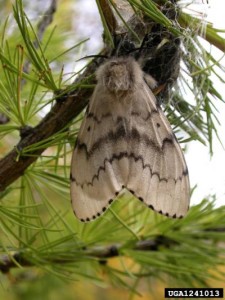As the recent article demonstrated, non-native insects and pathogens pose a unique threat to America’s forests. See also my blog posted May 10.
As Scott Schlarbaum and I said in Fading Forests III:
“Ultimately, then, the future of American forests is in the hands of our nation’s people. In choosing our elected representatives, holding other government officials accountable, and making our private choices, we decide the priority of whether addressing the causes and solutions to these pest issues is a priority – and, thus, whether we will keep of our natural heritage. There is already a strong foundation for action.”
However, American society – as reflected in its political decisions – has not put a high priority on countering this threat. We outlined the long history of inadequate funding for USDA APHIS and USFS in chapters III and VI. Also, I wrote about the appropriations process for Fiscal Year 2017 (which begins in October) in my blog posted on March 22.
Recent action by the House of Representatives (see below) might signal a change. We shall have to wait to see whether this change lasts.
APHIS Funding
Too often, we think first of U.S. Forest Service funding as singularly important regarding non-native forest pests and pathogens. When it comes to prevention, though, its USDA’s Animal and Health Inspection Service (APHIS) that is key.
Total funding for the USDA APHIS in FY17 will be on the order of $939 million. The budget for its plant health program is about $310 million. Included in this sum are mere tens of millions for addressing tree-killing pests:
- Tree and wood pests — $54 million in the Senate bill, but only $45.9 million in the House bill
- “specialty crops” — $167.5 million in the House bill, $158 million in the Senate bill; with only about $5 million likely to be spent on managing the sudden oak death pathogen, especially movement of infected plants, soil, etc. in the nursery trade.
The Center for Invasive Species Prevention and others had requested the higher number for “tree and wood pests”. We think higher funding is appropriate given the number of highly damaging wood-boring insects already in the country – e.g., Asian longhorned beetle; emerald ash borer; redbay ambrosia beetle and its associated laurel wilt pathogen; the polyphagous and Kuroshio shot hole borers and their associated pathogens … (all these species are described here). Furthermore, there is every likelihood that additional pests will be detected in the country since the wood packaging pathways remains leaky (see the Lovett et al. article cited above and my blogs about the wood packaging material pathway posted in July through October 2015).
The House bill specifies that $15 million of the “specialty crops” money should be allocated to citrus pests and pathogens, fruit flies, a grapevine pest and a multi-host pest (light brown apple moth).
USFS Forest Health Funding
Funding levels for the USDA Forest Service also demonstrate a low priority to countering non-native tree-killing insects and pathogens.
Total funding for the USFS is about $5 billion. In making its request for $4.9 billion, the Administration allocated only $92 million to countering threats to forest health (on both federal and non-federal lands).
The House of Representatives’ Appropriations Committee has a different – and welcome – view: the House bill provides $114.6 million for forest health protection. This is $15 million above the FY16 level and $22.55 million above the Administration’s request – a substantial increase unequaled in past years. The accompanying committee report expresses concern about severe insect and disease threats, especially in California. The report also notes that invasive forest pests threaten more than 58 million acres of the Nation’s forests. The Committee encourages the Service to continue its work to assess future risks, control existing threats, research and develop new control methods, and improve the health of forest ecosystems. Since only $5 million of the increase is to be used on non-federal lands, the “bump-up” for non-native pests will be modest.
A note of caution: the House expansion of funding for the forest health program was doubtless made easier by the House’s cuts to programs managed by the Environmental Protection Agency, which is funded by the same bill.)
The Senate bill follows the Administration in allocating only $92 million for forest health protection.
Not only has the Administration asked for less for the forest health program in recent years. The funding allocations within that total trouble me. In the current year (FY16), the USFS allocated only $20.2 million (15% of total forest health funds for this year) to specific projects targeting non-native insects or pathogens. Nearly $10 million of these funds went to just one species – European gypsy moth. The only other species receiving a significant proportion of the funds is hemlock woolly adelgid – HWA received $1.77 million. The second greatest allocation was to oak wilt — $466,000. Ranking third is white pine blister rust, which was allocated $420,000. A group of three species (goldspotted oak borer, thousand cankers disease, and laurel wilt) received a total $587,000. This low figure does not, in my view, reflect the great damage caused by goldspotted oak borer and laurel wilt. Furthermore, I assume that the polyphagous and Kuroshio shot hole borers are included in this grouping, although they are not listed specifically. Both shot hole borers threaten many tree species in southern California riparian areas, and pose a possible threat to trees in other parts of the country. All of these species are expected to receive less funding in FY17 under the Administration’s request. (Again, all these species are described here).
(Native pests – southern and western bark beetles – received a total of $7.2 million in FY16. Invasive plants were allocated $1.7 million. These figures are not included in my calculations in the preceding paragraph.)
USFS Research Funding
The House appropriations bill provides just under $292 million for research – the amount requested by the Administration. The Senate bill cut funding for research to $280 million – a cut of $11 million from the FY16 level. Worse, the Senate also added $2 million to the share of research funding allocated to foerst inventory. The only mention of non-native pests and diseases in the report accompanying the Senate bill is a paragraph instructing the USFS to work with the USDI Fish and Wildlife Service, National Park Service, USDA APHIS, and state agencies to address the threat to the Hawaiian Islands’ `ohi`a trees from the Ceratocystis fungus (the disease is described here). This report emphasizes the importance of continuing research on forest product utilization.
Even more troubling, for years the USFS has allocated only about 3% of its total research budget to research on “pest” species (including invasive plants). Of this total, about half – $5 million – has been allocated to projects targeting non-native insects or pathogens. This year (FY16), the highest funding went to hemlock woolly adelgid, at $1.782 million. The second greatest amount was allocated to emerald ash borer — $1.168 million.
(In FY16, the non-native western bark beetles received nearly $1.4 million in research funding; invasive plants received nearly $1.9 million. Again, these figures are not included in my calculations above. )
USFS Wildfire Funding
One explanation for the Administration’s lower funding requests is the great pressure on the USFS to fund management of wildfire. The agency now spends more than half of its annual budget to fight wildfires. This situation is expected to get worse as the climate warms and fires become even more frequent and intense.
The Obama Administration’s budget proposals for both FY16 and FY17 asked Congress to set up a system to pay the costs of fighting extreme wildfires in the same way it finances the federal response to other natural disasters. When hurricanes and tornadoes cause sufficient damage to be declared disasters by the president, the Federal Emergency Management Agency is authorized to exceed its annual budget and draw on a special disaster account. The account is adjusted each year to reflect the 10-year average cost of responding to such events. President Obama suggested creating a similar exception for USDA Forest Service and Department of the Interior.
Currently, the USFS must obtain funds through annual Congressional appropriations – which are adopted too early for an accurate assessment of that season’s likely fire damage. When fire-fighting costs exceed the appropriation, the USFS must transfer money from other accounts – setting back forest restoration projects and efforts aimed at preventing wildfires.
The Obama administration asked Congress to end the need for such transfers by appropriating 70% of the 10-year average it costs to fight wildfires each year and allowing the Forest Service access to a disaster fund.
However, the Congress has been unwilling so far to establish the disaster fund.
Conclusion
The House bill’s welcome increase for the USFS forest health protection program – if enacted – would address pests that are already widespread. Programs aimed at preventing introductions and responding to newly detected invasions – programs operated by APHIS – do not yet enjoy sufficient support from either the Administration or the Congress.
Advocates for stronger programs to combat non-native forest pests are exploring ways to ensure additional funding for key programs, especially early detection of and rapid response to newly detected outbreaks. You will hear more about these ideas in future!
SOURCES
Descriptions of the Administration’s fire-funding proposal can be found at:
http://thehill.com/policy/finance/253687-obama-officials-press-congress-to-change-wildfire-funding
Posted by Faith Campbell


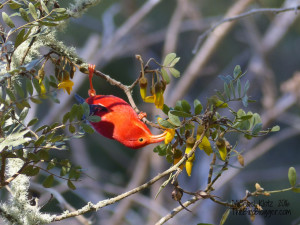
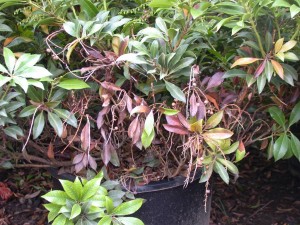

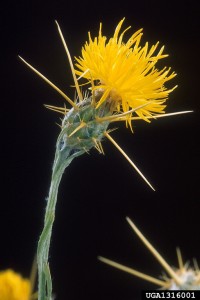
![PHYTRA_06[1]](http://nivemnic.us/wp-content/uploads/2016/04/PHYTRA_061.jpg)
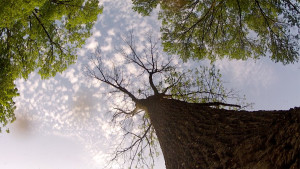
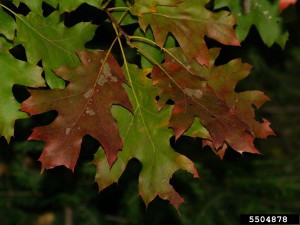
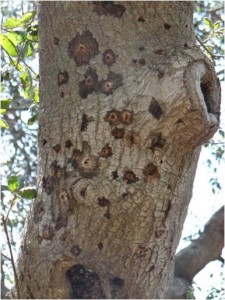 PSHB damage to coast live oak;
PSHB damage to coast live oak;